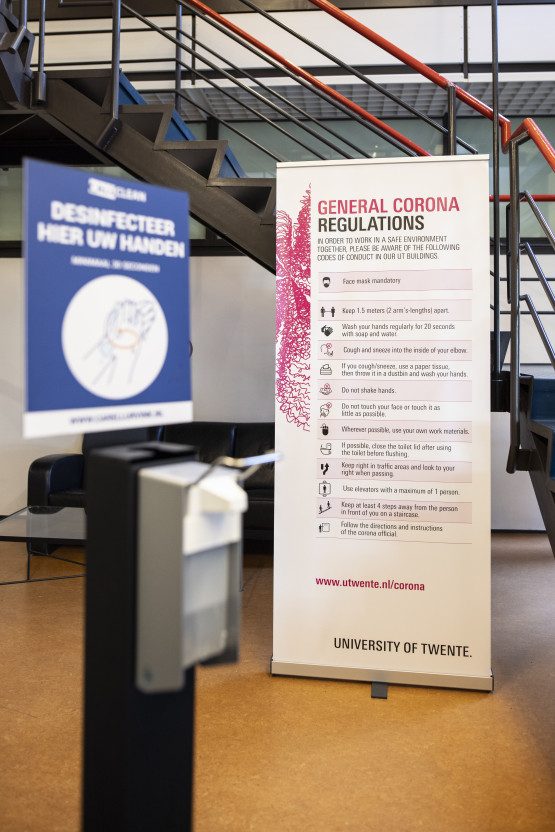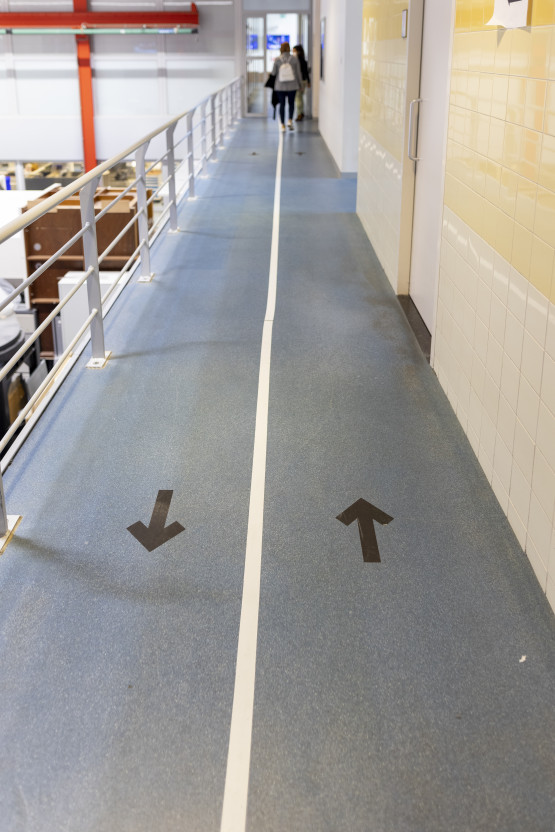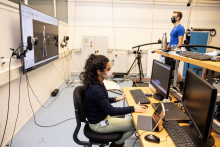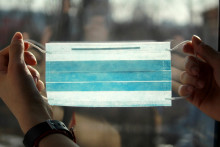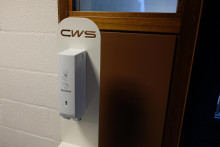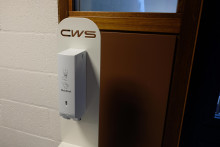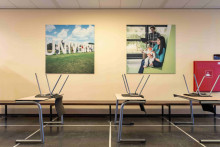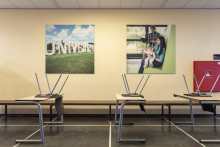While many scientists can run experiments using ‘only’ lab equipment and computers, that is not the case for most researchers at the department of Biomechanical Engineering, the home of wearable exoskeletons and rehabilitation robotics, among other developments.
‘Our research is really contact research,’ says Alejandro Moya Esteban, PhD candidate at the Neuromechanical Modeling & Engineering Lab. He and his colleagues rely heavily on access to labs and, very importantly, the willingness of test subjects to help further science. We join them for one morning to observe what ‘contact research’ looks like in a world dominated by Covid-19.
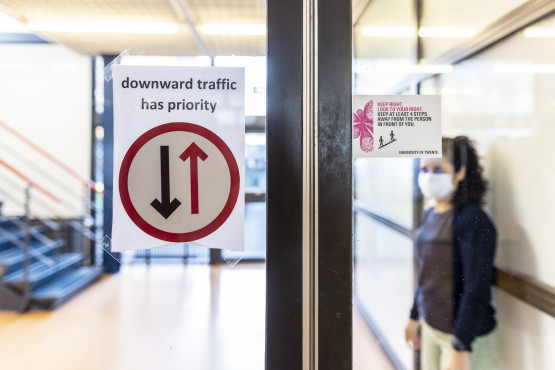
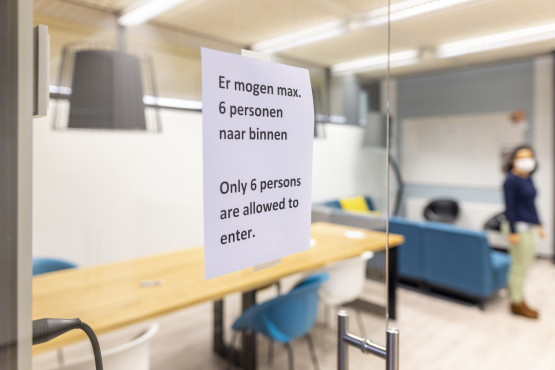
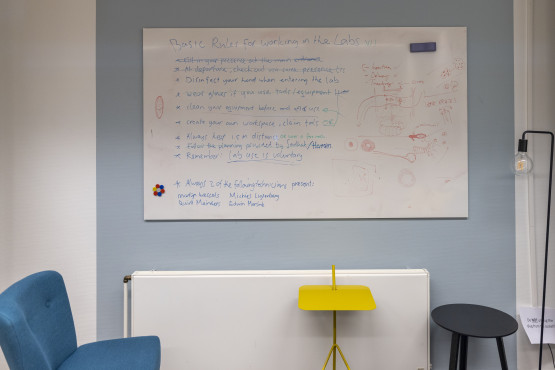
Various corona measures and reminders found throughout the Horst building.
Arriving to the Horst building, I barely notice all the corona ‘obstacles’ we need to deal with before even entering the lab. Not because they aren’t there. Keeping distance. Putting on a facemask. Disinfecting hands at the entrance. All of this has become strangely commonplace. And so I almost miss the giant posters with rules, assigned walking paths and door signs with maximum allowed occupancy inside the room.
Gloves and alcohol
‘Normally there should only be two people in the lab – the subject and I,’ warns Donatella Simonetti, PhD researcher who’s agreed to let us watch her work in the Rehabilitation Lab. ‘All external people need to be approved, that’s why we asked for permission before inviting you.’ We try to spread throughout the room as much as possible and facemasks stay on at all times, of course. But I can’t shake the feeling that we might be breaking the rules here.

UT researchers Pablo Cop and Donatella Simonetti
With this experiment, however, there is no other way – the 1.5 meter distance will be broken. Additional measures are in place to protect the scientists and subjects. Firstly, ‘the scientist’ and ‘the subject’ are one and the same here. Simonetti asked her colleague Pablo Cop to participate in her experiment and tomorrow she will be ‘her own subject’. ‘It’s just less risky,’ she says as she puts on gloves and begins cleaning her instruments and surfaces. ‘I will clean everything after the experiment as well, so that my colleague can use the lab safely. This makes the setup a bit more lengthy, but it’s doable.’
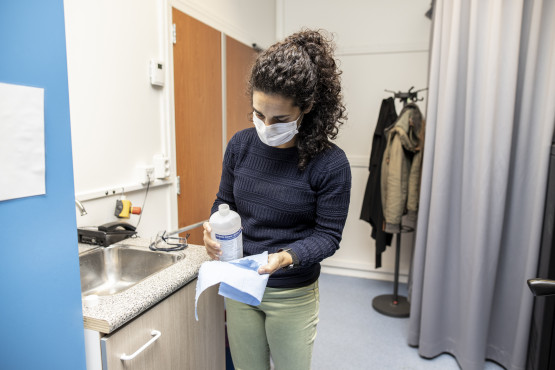
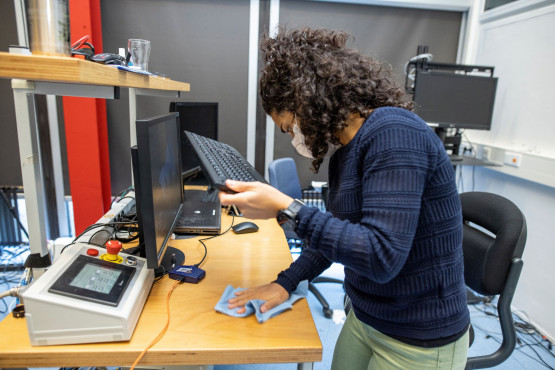
The sock
Simonetti is developing a new technology for clinics to assess motor deficits of (stroke) patients, and help find the best rehabilitation approach for them. She is using multichannel EMG to measure muscle activity and reflective markers to map the movement of the subject. This allows her to see muscular-skeletal simulation and observe what happens inside the body. ‘This would normally take weeks to process, but with this new technology we can see the data in real time,’ she explains.
The new technology revolves around a ‘sock’. ‘This garment is just a prototype,’ says the researcher. ‘But the idea is that patients can easily put it on and it’s washable – once you remove the EMG.’ For now at least, the garment requires an expert to place it on the leg. ‘I feel like a Christmas tree,’ remarks Cop, looking at all the white wires hanging from his foot. The dozens of markers that need to be attached to his skin don’t make the comparison less accurate.
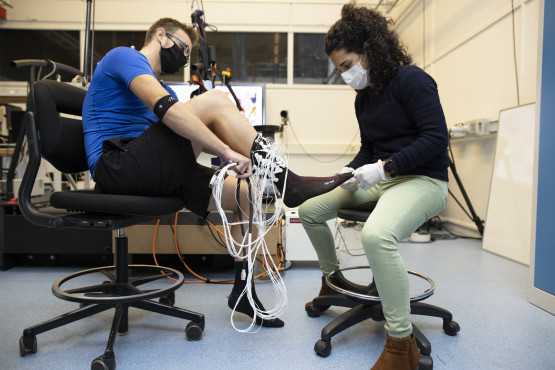
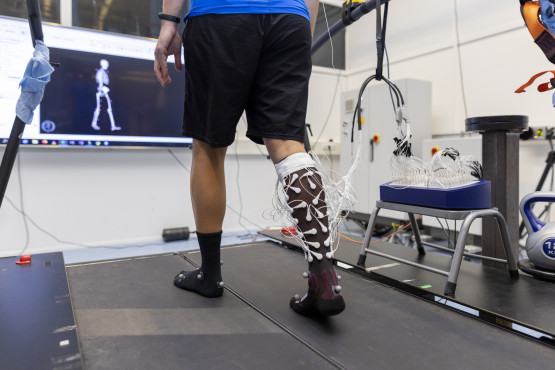
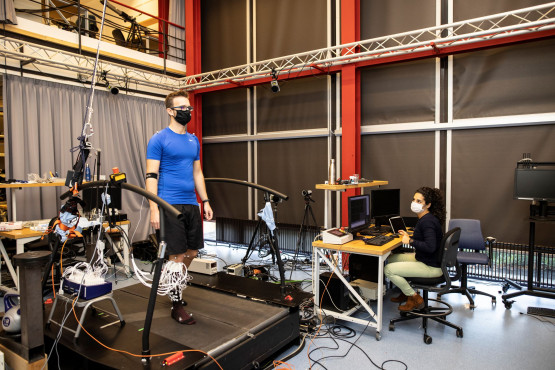
‘This is the only part when I need to be close,’ says Simonetti. ‘After this I will be able to keep the distance.’ Indeed, the subject steps on the treadmill and the scientist can observe the movement on a computer and a large screen. ‘I’m glad I can do the experiment as often as I need now. Soon I will have sufficient data and I hope to test with real patients next year. But now we have to go.’ The lab is shared and another researcher will need its facilities shortly.

‘Afraid of another lockdown’
‘I feel like the workload in our labs is growing,’ says Alejandro Moya Esteban when we join him in the Wearable Robotics Lab on the second floor of Horst. ‘Everyone is afraid of another lockdown, and so we all come here as much as we can. We need the data, so that we can work from home later. I think this affects the quality of our work, because we do everything in a rush. That is a pity.’
Moya Esteban comes to the lab to test an exoskeleton designed to help workers with lifting heavy objects. ‘I evaluate the effect of the exoskeleton on the body.’ For that, he also needs various test subjects. ‘As far as I know, we all only use our direct colleagues for experiments. That way we minimize contact with external subjects. Using other people is technically allowed, but this is the choice we’ve made.’
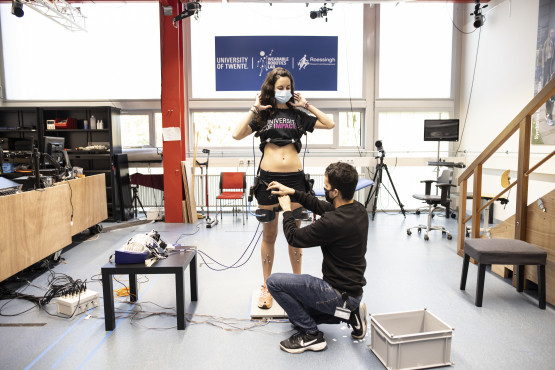
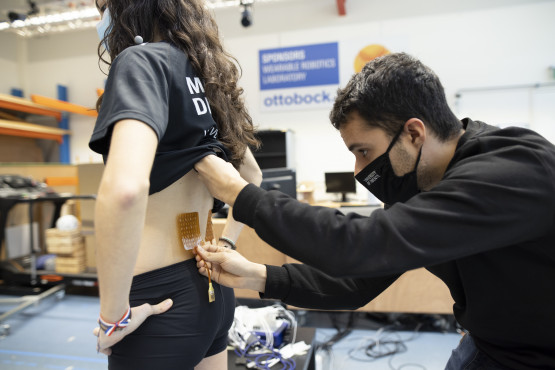
UT researchers Alejandro Moya Esteban and Cristina Bayón Calderón in the Wearable Robotics Lab
It seems like a sensible choice, given that the researcher needs to attach EMG sensors and kinematic markers to the subject, as well as help them put on the exoskeleton. A task that cannot be accomplished from a distance. ‘I see that you are cold. I’m sorry,’ Moya Esteban apologizes to Cristina Bayón Calderón, fellow researcher and today’s test subject. ‘I turned the heating to the max.’ The subject will get a chance to warm up, though. Wearing the device, she stands on a force plate and lifts boxes using different techniques, while the scientist monitors the impact. ‘This normally takes an hour and a half. I always need to ask subjects if they are fit. This is quite physically demanding.’

Limitations
Besides the temperature issue, is it uncomfortable to be in such close proximity to one another? ‘It can be,’ replies Bayón Calderón. ‘Not because I’m afraid for my own health, but because you never know how the other person is feeling about it. That makes it a bit awkward. However, we all work with healthy subjects, not real patients. If you need a real patient, then you could have a problem.’
‘Yes, that is true,’ agrees Moya Esteban. ‘If you can’t use the lab or test subjects, you have to look for alternatives. You will find a way, but you might need to completely change your research plan. This happened for some of my Master students in the spring. Luckily, we can now do experiments without major obstacles. The main issue is the limited number of people in the room and wearing masks. We are strict about that. For the rest, we are asked to label everything we used, so that we don’t have to disinfect everything all the time. There are some limitations, but it could be a whole lot worse.’
